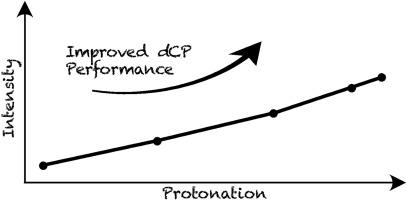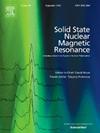Protonation tuned dipolar order mediated 1H→13C cross-polarization for dissolution-dynamic nuclear polarization experiments
Abstract
A strategy of dipolar order mediated nuclear spin polarization transfer has recently been combined with dissolution-dynamic nuclear polarization (dDNP) and improved by employing optimized shaped radiofrequency pulses and suitable molecular modifications. In the context of dDNP experiments, this offers a promising means of transferring polarization from high-gamma 1H spins to insensitive 13C spins with lower peak power and lower energy compared with state-of-the-art cross-polarization schemes. The role of local molecular groups and the glassing matrix protonation level are both postulated to play a key role in the polarization transfer pathway via an intermediary reservoir of dipolar spin order. To gain appreciation of the mechanisms involved in the dipolar order mediated polarization transfer under dDNP conditions, we investigate herein the influence of the pivotal characteristics of the sample makeup: (i) revising the protonation level for the constituents of the DNP glass; and (ii) utilizing deuterated molecular derivatives. Experimental demonstrations are presented for the case of [1–13C]sodium acetate. We find that the proton sample molarity has a large impact on both the optimal parameters and the performance of the dipolar order mediated cross-polarization sequence, with the 13C signal build-up time drastically shortened in the case of high solvent protonation levels. In the case of a deuterated molecular derivative, we observe that the nearby 2H substituted methyl group is deleterious to the 1H→13C transfer phenomenon (particularly at low levels of sample protonation). Overall, increased solvent protonation makes the dipolar order governed polarization transfer significantly faster and more efficient. This study sheds light on the influential sample formulation traits which govern the dipolar order-controlled transfer of polarization and indicates that the polarization transfer efficiencies of deuterated molecules can be boosted and reach high performances simply by adequate solvent protonation.


 求助内容:
求助内容: 应助结果提醒方式:
应助结果提醒方式:


